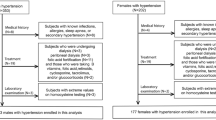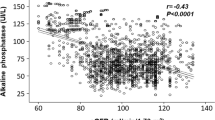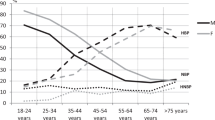Abstract
Aims: To assess the association of hypertensive status and antihypertensive drug treatment with lipid and haemostatic levels in middle-aged men.Methods and results: Hypertensive status, antihypertensive drug treatment, total and high-density lipoprotein (HDL) cholesterol, triglyceride, apoproteins A-I and B, lipoparticles LpA-I, LpE:B and Lp(a), fibrinogen, plasminogen activator inhibitor-1 (PAI-1) activity and factor VII were assessed in a sample of men 50–59 years living in France (n = 7050) and Northern Ireland (n = 2374). After adjustment for age, body mass index, smoking status, educational level, country, alcohol drinking and hypolipidaemic drug treatment, untreated hypertensive subjects had higher levels of total cholesterol, triglyceride, apoproteins A-I and B and PAI-I activity than normotensive subjects. On univariate analysis, diuretics decreased total and HDL-cholesterol and apoproteins A-I and B; those differences remained after multivariate adjustment. Treatment with beta-blockers decreased total and HDL-cholesterol, apoprotein A-I and LpA-I, and this effect remained after multivariate adjustment. Calcium channel blockers decreased total cholesterol and apoproteins A-I and B; those differences remained significant after multivariate adjustment. ACE inhibitors decreased total cholesterol, triglycerides, apoprotein B and LpE:B; and this effect remained after multivariate adjustment. Analysis of the subjects on monotherapy showed beta-blockers to decrease total cholesterol and HDL parameters and angiotersin-converting enzyme (ACE) inhibitors to decrease low-density lipoprotein (LDL)-related parameters, while no effect was found for the other antihypertensive drugs.Conclusions: Hypertensive status is associated with an unfavourable lipid and haemostatic profile in middle-aged men. Antihypertensive treatment with beta-blockers decreases HDL parameters, whereas treatment with ACE inhibitors appears to decrease total cholesterol and LDL-related parameters.
This is a preview of subscription content, access via your institution
Access options
Subscribe to this journal
Receive 12 digital issues and online access to articles
$119.00 per year
only $9.92 per issue
Buy this article
- Purchase on Springer Link
- Instant access to full article PDF
Prices may be subject to local taxes which are calculated during checkout
Similar content being viewed by others
Author information
Authors and Affiliations
Rights and permissions
About this article
Cite this article
Marques-Vidal, P., Montaye, M., Haas, B. et al. Association of hypertensive status and its drug treatment with lipid and haemostatic factors in middle-aged men: the PRIME Study. J Hum Hypertens 14, 511–518 (2000). https://doi.org/10.1038/sj.jhh.1001061
Received:
Revised:
Accepted:
Published:
Issue Date:
DOI: https://doi.org/10.1038/sj.jhh.1001061



